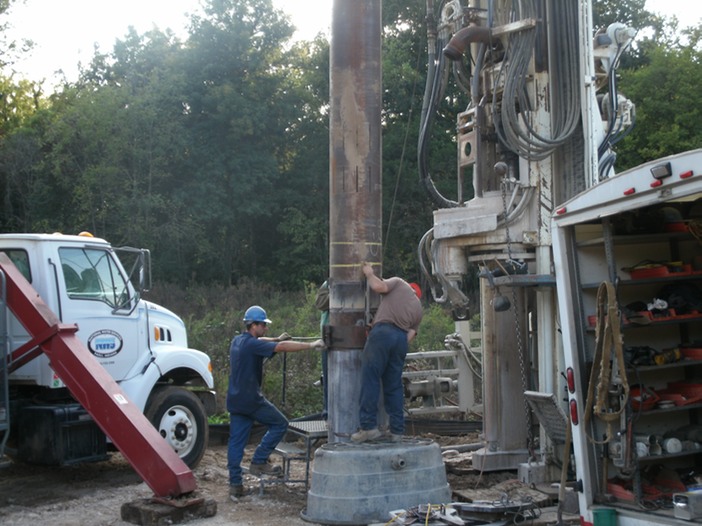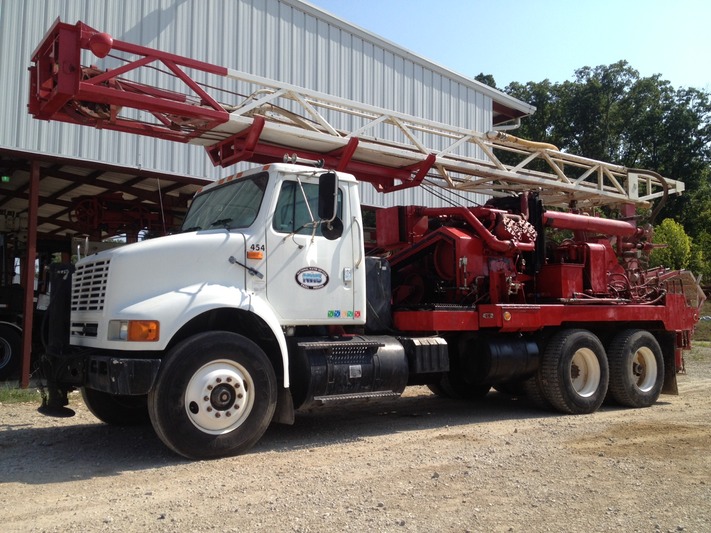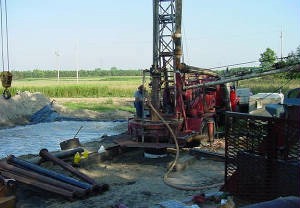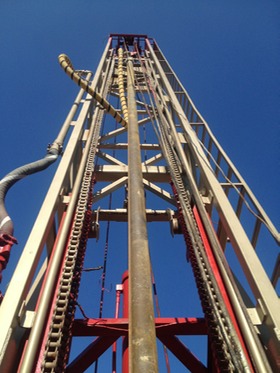
No single method of well construction suits all purposes. Not only geologic factors, but the intended use and available budget may indicate the most suitable method of drilling.
The knowledge gained from well drilling since early 1930’s combined with present day scientific knowledge and experience results in a professional ground water development company.

Direct Rotary Drilling
Direct rotary drilling consists of cutting a borehole by means of a rotating bit and removing bit and removing the cuttings by continuously circulating a drilling fluid. Both a bit and the drilling fluid purpose of the well the time required to complete a drilled well is usually slight in comparison to other methods.
Air rotary drilling is often utilized in hard rock drilling. The air rotary equipment provides an estimation of the amount of water a well may produce.
Mud rotary drilling equipment is often used in unconsolidated sediments. The drilling fluid stabilizes the formation, while drilling removes the cuttings from the bottom of the hole.

Reverse Circulation Drilling
Large diameter production wells in sand gravel can be rapidly drilled by the reverse circulation process.
In this method, the flow
of drilling fluid is reversed as compared to the conventional rotary methods.
The drilling fluid used is not as heavy, lessening the problem of formation
clogging. This makes well development easier and less costly. Wells up to 72 inches in diameter can be drilled by reverse
circulation.
Cable Tool Percussion Drilling
Ever since the early days of water well drilling, the percussion drilling rig has played a central role. This is an all purpose machine that can be use to penetrate sand, gravel, or hard rocks such as sandstone or limestone. Depending upon the geologic formation, this method of drilling is traditionally very slow
